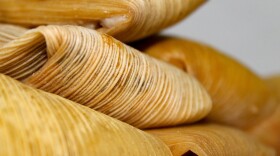As many Austinites without power were trying to stay warm this week, they were also trying to keep their food cold.
Around 265,000 Austin Energy customers experienced power outages at some point during the week. As of Friday afternoon, 115,000 customers were still without power.
Without a functioning refrigerator or freezer, perishable food can become dangerous to eat. But losing electricity doesn’t mean everything needs to be thrown out. Here’s some guidance from the Centers for Disease Control and Prevention and the U.S. Department of Agriculture’s Food Safety and Inspection Service on how to properly assess if your food should be saved or trashed.
In a power outage, food can stay cold and safe for up to four hours in a refrigerator, 48 hours in a full freezer and 24 hours in a half-full freezer, according to the CDC. During this time, it’s important to keep your appliance doors shut as much as possible to retain cool temperatures. Adding ice or dry ice to your refrigerator or freezer and transferring food items to a cooler with ice can also help.
The goal is to keep your refrigerated or frozen food items at 40°F or below. The USDA's Food Safety and Inspection Service describes any temperature above 40 as a “danger zone.”
While it may seem like a good idea to put food outside during cold weather, the USDA says that's a mistake. As temperatures vary, food can become warmer than 40°F and frozen items can thaw. Putting your food outside also exposes it to animals and unsanitary conditions.
Experts also warn never to determine whether food has gone bad by tasting it. Instead, focus on the food’s temperature and how long it’s gone without cooling.

The CDC recommends tossing perishable food items from a refrigerator that has been four hours without power or a source of cold like ice, as well as food items that are above 40°F. Any perishable food — like meat, seafood, poultry, milk or eggs — that has been above 40°F for more than two hours should be thrown out, according to USDA. Thawed frozen food that is at or below 40°F or has ice crystals is safe to refreeze or cook, according to the CDC.
"When in doubt, throw it out," the CDC and USDA say. For a more detailed list about food spoilage and safety, go here.
If a power outage has caused your food to spoil, you may be eligible for reimbursement from your insurance company. Homeowners insurance policies often cover up to $500 in food spoilage from a power outage, though deductibles apply, according to the Insurance Information Institute. Reach out to your insurance company to find out if you’re eligible.
Copyright 2023 KUT 90.5. To see more, visit KUT 90.5. 9(MDA4OTAxNzAzMDEzMjc0MTc2MzA5ZDZlMw004))







